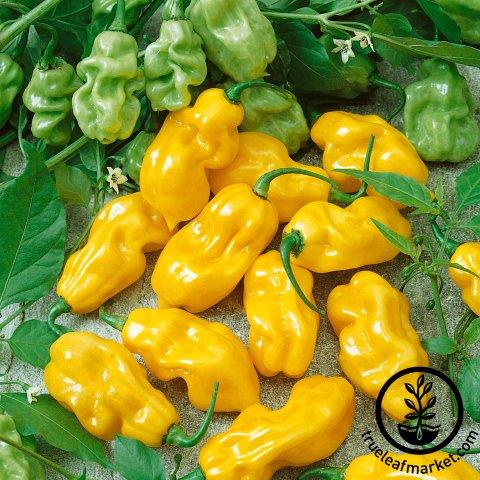Guide to Pepper Types
by Ashleigh Smith
Peppers are one of the most popular summer vegetables to grow. They love the warm summer months and make the perfect summer snack, fresh salsa ingredient, pizza topping, or splash of color in your fajitas. Peppers are definitely one of my must have garden vegetables. Not only are they colorful, but they come in a variety of flavors and heat levels. Below you can find recommendations from each level of spiciness to suite your fancy. Hotter peppers will have more capcaisin, the natural spice compound, in them. The scoville scale heat units can be used as a guide to just how spicy the peppers in each category will be.
What is the Scoville Scale?
The scoville scale is named after its creator Pharmacist Wilbur Scoville who started measuring the spice level of hot chilis using a organoleptic (taste test) in 1912. This test was most popularly used until it was replaced by the High-Performance Liquid Chromatography (HPLC) test in 2011. This test measures the capsaicinoid content in an analytic quantification rather than a subjective human assessment.
Types of Peppers
Ornamental
Ornamental Peppers are grown for their appearance, rather than taste. While they are primarily used for their looks, they may still be used in culinary applications. As for their spice levels, it depends on the individual varieties which appear across the scoville scale.


Fireworks

Black Pearl AAS

Chilly Chili AAS

Black Olive AAS
Sweet (0-100 SHU)
Include peppers without heat, such as the bell, banana, mini sweet, and long sweet peppers. These are ideally used for snacking, salsa, cooking, roasting, and grilling. While they don’t have any heat, they do add a fresh flavor to your favorite dishes.

Cal Wonder

Mini Bell Red

Lilac Bell

Gatherers Gold Sweet Italian
Hot (100+ SHU)
Hot peppers have a spicy sensation that accompanies their unique flavor profiles. The level of spice in pepper is dependent on the amount of capsaicin (a natural chemical compound triggering spiciness. The hotter the pepper, the greater the concentration. For reference, standard U.S. grade pepper spray registers at a Scoville heat unit up to 5,300,000, and Pure capsaicin measures up to 16,000,000 SHU. The hottest known pepper is the Carolina Reaper measuring up to 2,200,000 SHU. Whether you want the essence of spice or your tongue to feel like it is going to walk away on its own, there is a pepper for you.

Mild (100-2,500): Include Pepperoncini, Anaheim, and Poblano peppers.

Poblano

Pepperoncini Italian

Anaheim Chili

Ancho Ranchero Hybrid
Medium (2,500-30,000): Include Jalapenos, Hungarian, and Serrano types.

Jalapeno

Hungarian Hot Wax

Serrano Tampiqueno

Cochise Hybrid
Hot (30,000-100,000): Include Cayenne, Tabasco, and Thai peppers.

Cayenne Long Slim

Tabasco

Thai Hot

Mushroom Red
Extra Hot (100,000-300,000): Include most Habaneros, Scotch bonnets, and Fatali’s.

Jamaican Yellow

Hot Portugal

Caribbean Red Habanero

Habanero White
Extremely Hot (300,000-1,000,000+): Includes Ghost Peppers, Red Savina, Chocolate Habanero, Trinidad Scorpion, and the Carolina Reaper. These will for sure knock your socks off and have you sweating.

Wicked Ghost Hybrid

Bhut Jolokia Ghost

Caribbean Yellow Habanero

Cienfuegos Orange